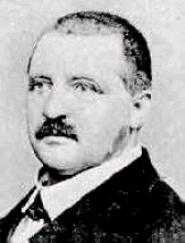Four Orchestral Pieces (Bruckner)
| Vier Orchesterstücke | |
|---|---|
| by Anton Bruckner | |
 The composer, c. 1860 | |
| English | Four Orchestral Pieces |
| Catalogue | WAB 96–97 |
| Composed | 1862 – Linz |
| Performed | 12 October 1924 – Klosterneuburg |
| Published | 1930 |
| Instrumental | Orchestra |
Four Orchestral Pieces are four early compositions by Anton Bruckner which are published together in the current complete edition of his works.
When studying with Otto Kitzler, Bruckner composed his first instrumental work, the String Quartet in C minor in 1862. Somewhat later in the same year, he tried his hand at purely orchestral composition. These "first arms" resulted in four small orchestral pieces: the so-called Drei Sätze für Orchester (Three Orchestral Pieces, literally: Three movements for orchestra) and the Marsch (March) in D minor. In the current Gesamtausgabe, these works are grouped as Vier Orchesterstücke (Four Orchestral Pieces).[1][2]
Three Orchestral Pieces
The Three Orchestral Pieces (E-flat major, E minor and F major, WAB 97) are charming, melodious little movements, scored for an orchestra employing one trombone in addition to the orchestral setting of Mozart's late symphonies.
Their main interest lies in the fact that with these pieces Bruckner for the first time touched upon that field which he was to make his life's work: pure and absolute orchestral music.
March in D minor
The March in D minor (WAB 96) is the only one of the four pieces which has some slight indication of the Bruckner to come.
It is interesting to note that it already contains a passage which will recur much later in the Eighth Symphony. The orchestral setting of the March used two additional trombones.
The scores of the Four Orchestral Pieces were given by Bruckner to his friend Cyrill Hynais, together with that of the Overture and the Symphony in F minor.
Discography
The Four Orchestral Pieces have been recorded about ten times, mainly as addendum to the recording of a symphony.[3][4] Some of these recordings can be downloaded from John Berky’s site.[5]
Notes
- ↑ de: Anton Bruckner Kritische Gesamtausgabe – Frühe Orchesterwerke und Instrumentalstücke
- ↑ en: Anton Bruckner Critical Complete Edition – Early orchestral and instrumental works
- ↑ "Discography of the Three Orchestral Pieces by John Berky". Abruckner.com. 1997-06-06. Retrieved 2014-06-30.
- ↑ "Discography of the March in D minor by John Berky". Abruckner.com. 1997-06-06. Retrieved 2014-06-30.
- ↑ "Downloadable samples of the small orchestral pieces on John Berky’s site". Abruckner.com. Retrieved 2014-06-30.
External links
|